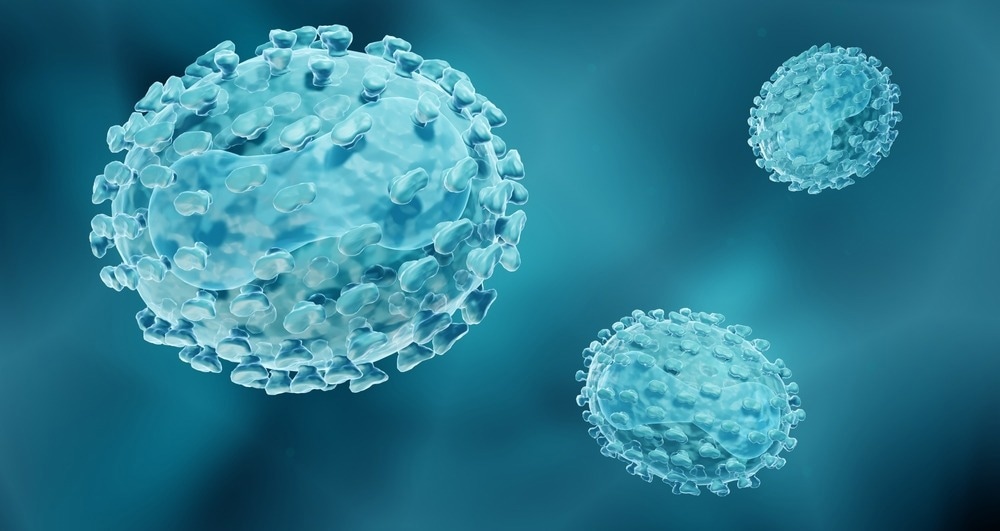In a recent review article published in Venereology, scientists have described the epidemiology, transmission, clinical features, diagnosis, treatment, and preventive strategies of monkeypox infection among humans.
 Study: A Review of Monkeypox: The New Global Health Emergency. Image Credit: ART-ur/Shutterstock
Study: A Review of Monkeypox: The New Global Health Emergency. Image Credit: ART-ur/Shutterstock
Background
Monkeypox, a zoonotic virus belonging to the Poxviridae family and the Orthopoxvirus genus, was first detected in humans in 1970. The smallpox virus, declared eradicated in 1980, also belonged to the same viral family as the monkeypox virus.
Monkeypox was initially endemic to central and west Africa, with some travel-related transmission reported in some non-endemic countries. However, since May 2022, several outbreaks have been documented in more than 90 countries worldwide, highlighting the involvement of human-to-human transmission at the community level.
Considering the recent uprise in cases, the World Health Organization (WHO) has declared monkeypox a public health emergency of international concern. Since most recent cases have been detected in a particular community of men who have sex with men (MSM), monkeypox is currently considered a sexually-transmitted infection.
Monkeypox pathogenesis
Monkeypox is a double-stranded DNA virus, and its genome is composed of 190 large non-overlapping open reading frames (ORFs) and structural proteins. The viral host cell entry process is initiated by the fusion of viral glycoproteins with host cell membrane glycosaminoglycans.
The viral DNA replication, transcription, assembly, and release occur inside host cells. Both monkeypox and smallpox viruses share a commonality in putative virulence and immunomodulatory amino acid sequences, justifying the cross-protection provided by smallpox vaccines against monkeypox infection.
Although it belongs to the same genus, smallpox is more clinically aggressive than monkeypox. In earlier outbreaks, monkeypox has shown less potent human-to-human transmission than smallpox. Certain gene mutations related to interferon sensitivity might be responsible for lower transmission dynamics. Similarly, the less severe clinical outcome of monkeypox infection might be because of an interleukin (IL)-1β-binding protein. The absence of this protein has been found to correlate with significant pathogenicity and fever in smallpox infection.
Monkeypox epidemiology
Around 50,000 cases of monkeypox infection and 15 deaths have been documented in 99 countries between January and August 2022. The most affected countries are the US, Spain, the UK, Germany, France, Brazil, Netherlands, Canada, Portugal, and Italy.
About 95% of the recent infections have been detected in MSM and bisexual men. Another common finding among monkeypox-infected individuals is a positive status for human immunodeficiency virus (HIV).
The US Centers for Disease Control and Prevention (CDC) has set certain epidemiological criteria for monkeypox infection, which primarily focus on close contact with infected individuals, travel history to countries with recent outbreaks, and close proximity with infected animals.
Monkeypox transmission
Monkeypox infection involves both animal-to-human and human-to-human transmissions. Available literature suggests that rope squirrels, a small mammalian species, could a potential reservoir of monkeypox virus.
The animal-human transmission primarily occurs via direct contact with infected animal skin lesions, bodily fluids, and animal bites and scratches, as well as the handling and consumption of infected animal meat. The human–human transmission occurs via direct personal contact with lesions and bodily fluids, prolonged face-to-face contact, or indirect contact with fomites such as clothing and bedding. Close sexual contact is considered to be the main route of viral transmission during recent monkeypox outbreaks.
Regarding vertical transmission, previous studies have indicated that the virus can adversely affect pregnancy, including congenital infection and severe maternal and fetal morbidity and mortality.
Clinical outcome of monkeypox infection
Monkeypox is mostly a self-limiting infection, with symptoms lasting for 2 – 4 weeks. However, severe infections may occasionally occur, especially among children and immunocompromised patients.
The most common symptoms include fever, malaise, myalgia, chills, fatigue, headache, swollen lymph node, and most prominently, skin rashes or lesions. In severe cases, symptoms may include encephalitis, sepsis, hemorrhage, and confluent skin lesions.
The most prominent clinical features observed during recent monkeypox outbreaks include skin lesions in external genitalia, anal region, and oral mucosa.
Several factors can influence the outcomes of monkeypox infection, including age, comorbidities, immune system efficiency, the severity of illness, and cross-protection from smallpox vaccination.
Therapeutic management
No antiviral medications are currently available to specifically target monkeypox. However, some repurposed medicines previously targeting smallpox infection are currently being used against monkeypox. These medicines include tecovirimat and brincidofovir.
According to the US CDC, repurposed antiviral medicines are advised for high-risk patients and those with severe infection or aberrant infection in atypical locations.
Preventive measures
The best preventive measure is to avoid close contact with people who have monkeypox-like skin lesions. It is also vital not to share utensils, bedding, and other stuff with infected people. Healthcare personnel caring for infected patients should wear appropriate personal protective equipment.
Vaccines developed against smallpox are known to provide some level of cross-protection against monkeypox. Two FDA-approved smallpox vaccines, JYNNEOS and ACAM2000, can be used to control the outbreaks of monkeypox infection. JYNNEOS contains a replication-incompetent live Vaccinia virus and, thus, is safe to use in people with HIV infection. However, ACAM2000 contains a replication-competent live vaccinia virus, which restricts its application to certain people.
Two types of vaccination regimens have been proposed by the WHO and US CDC. Post-exposure prophylaxis aims at preventing disease progression by immunizing people four days after monkeypox exposure. In contrast, pre-exposure prophylaxis is recommended for high-risk people.